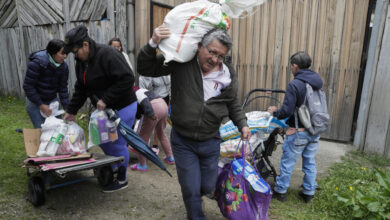Will We Run Out of Food by 2050?
We explain the challenges we are facing and the possible outcomes in the world for 2050.

What sets the alarm bells on in international organizations is the approach of how to feed this number of inhabitants. Photo: Unsplash
LatiAmerican Post | Brandon Martínez Salazar
Listen to this article
Leer en español: ¿Nos quedaremos sin comida para el 2050?
Overpopulation is one of the issues that most concerns humanity in the relatively near future. The more people there are on the planet, the more is the consumption of natural resources to sustain their lives. There are currently 7,800 million human beings and it is estimated that by 2050 (in less than 30 years) there would be a total of 9,000 million. What raises the alarm in international organizations is the approach of how to feed this number of inhabitants and if there will really be by then the possibility of producing the resources that are required.
Para 2050, necesitaremos alimentar a 2000 millones de personas más.
Un sistema de producción de alimentos sostenible es capaz de abastecer la creciente demanda sin destruir el planeta. @WFP_es explica qué es un sistema alimentario. https://t.co/kWfd4Q5oQc pic.twitter.com/qg2pv1RtEB
— Naciones Unidas (@ONU_es) July 27, 2021
In this sense, the problem begins in the way in which current agriculture and livestock have been developing to satisfy the market and the needs of the people. If it continues in this way, it is predicted that by half a century it will not be possible to feed the estimated population, since it would have to produce between 70 and 100% more of the food that is produced today; which would represent a latent and direct threat against nature.
Perspective of international organizations
According to data from the United Nations, currently, 1 billion people suffer from malnutrition and this number may increase considerably in the next decade due to soil degradation. Therefore, it is likely that in 2035 the amount of food produced today will decrease by 12% .
On the other hand, the FAO (the UN body in charge of international activities to eradicate hunger), in its report The Future of Food and Agriculture, Trends and Challenges states that: “ This expected growth will probably be concentrated in Africa and South Asia, where it will seriously damage development prospects. Local communities depend on agriculture for employment and income generation, and yet it cannot be further developed due to the pressure that land and water resources are already subjected to.”
In short, the current situation of humanity in terms of food in the future is alarming, which is why it is necessary to implement new practices that solve the upcoming challenges.
Also read: Can climate change be stopped?
Climate change and challenges for 2050
The sectors that produce food contribute to the emission of greenhouse gases, becoming a significant part of climate change and the problems that affect ecosystems and survival on earth. These emissions from land use have increased progressively in the last 50 years and will continue to do so in the coming decades. The question is what to do?
FAO proposes the following to address future challenges regarding the looming food situation due to climate change and overpopulation:
For food stability:
- Improve agricultural productivity in a sustainable way to meet growing demand.
- Guarantee a sustainable base of natural resources.
- Address climate change and the intensification of natural disasters.
- Prevent transboundary pests and diseases.
For access to food:
- Eradicate extreme poverty and reduce social inequality.
- Increase resilience to crises, disasters and conflicts..
- Improve income-generating opportunities in rural areas and address the root causes of migration.
“The results will depend on whether policy makers and stakeholders will be able to integrate the different actions to achieve specific objectives and face interrelated challenges. Sustainable development is a universal challenge whose collective responsibility rests with all countries . The status quo is no longer an option, therefore, all societies will have to introduce fundamental changes in their way of production and consumption. Major changes in agricultural systems, rural economies and natural resource management are required to overcome the many challenges that exist and ensure a safe and healthy future for all," the report suggests.




